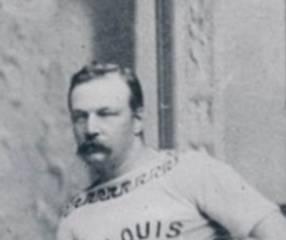Baseball legend called Onset home
When Derek Jeter takes to the field at Fenway Park on Sept. 28 for what could be his last baseball game, he will go down as one of the greatest shortstops in baseball history. But he, and every other shortstop in the majors, owes part of his legacy to a man who lived in Onset over a century ago: inventor of the bunt and pioneer of the shortstop position, Dickey Pearce.
"Yes I was the first to introduce the bunt hit," Pearce said in a 1905 article in The Boston Globe. "While with the Brooklyn Atlantics, in 1867, the idea came to me, and I figured out just how a ball would bound when met from different angles. First I practiced bunting, then hitting the ball on top so that it would carom from the fair ground to the ground back of third base."
Pearce was interviewed by the Globe after a storied career as one of the most famous amateur baseball players in the 1860s and 70s.
Official Major League Baseball historian John Thorn wrote about the 5'3" 161-pound shortstop: "The men who made the position modern, by bringing it into the infield and then widening its responsibilities, were Dickey Pearce and George Wright, the two great shortstops of baseball’s early professional era."
After his playing days and a short stint as an umpire, Pearce moved with his wife to a small house on a cliff in Point Independence in 1902, where he spent his time, "taking care of my garden and about 75 hens, mostly Rhode Island Reds," as he said to the Globe.
"We [Pearce and his wife] came down here three years ago broken down in health and now we both feel like 2-year-olds," said Pearce, about his fight with Bright's disease and move to Onset. "While still weak we came here to live practically in the open air where the prevailing summer winds are tempered as they cross Buzzards Bay and the winter blasts are shorn of their fearsomeness by the evergreen trees that hem us to the north."
"I pay $2 a week for this place and consider it my limit," he said. "Greatest place in the world."
Born in Brooklyn in 1836, Pearce played for and captained one of the best teams in the amateur-era of American baseball, the Brooklyn Atlantics. The Atlantics were one of the first sports dynasties, as champions of the National Association of Baseball Players in 1859-1861, 1864-1866 and 1869.
Pearce was a master of finding baseball loopholes, thereby evolving the sport and bringing it closer to the game we know today.
Another major contribution of his was the aforementioned "fair-foul" hitting, where he would chop down on the baseball to make it start in fair territory then dart foul, making for an easy hit. This led to the 1877 rule that balls are only fair when they stay within the foul lines past first or third base. He is also credited for helping create the infield fly rule, after dropping easy fly balls in the infield made for a foolproof double play.
But Pearce's greatest contribution to the game was the way he revolutionized the shortstop position.
In those days, three infielders played very close to their bases while an additional fielder roamed the open space. Pearce found it best to sit in between second and third base and shift the other positions, leading to a much tighter defense and the look of a modern baseball team.
Although he made the game more modern, he was also a part of a number of Civil War-era baseball oddities.
Pearce played multiple games of ice baseball in the late 1860s, which is exactly what it sounds like, baseball on ice, with skates, but with a softer ball. In 1859, along with some other New York baseball players, he played exhibition cricket matches against a touring group from England.
Pearce was a legend in the amateur leagues, but was well past his prime once the professional leagues started. He was 35 when he made his debut in the National Association as a player for the New York Mutuals in 1871. The next year he was re-signed for $1,200.
As shortstop on the Brooklyn Atlantics in 1873, he was part of one of the worst left sides to an infield ever when he and third baseman Bob Ferguson, who was also the manager, combined for 186 errors in 55 games. Pearce played baseball on and off for 28 years.
When the Globe article was published, the author claimed Pearce was the oldest living ballplayer. Three years later in 1908, he died in Onset at the age of 72.
Pearce lamented to the Globe in 1905, "I played ball about 20 years too soon."
Little did he know over a century later, he would be known as a man who helped invent one of America's favorite pastimes.













